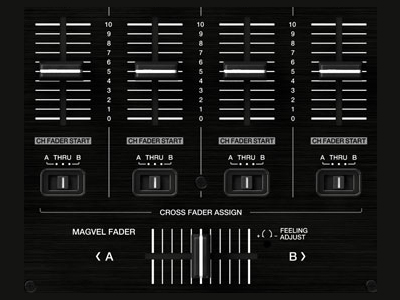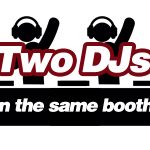 If you have at least a bit of DJ’ing experience, I’m sure you know that volume can be controlled from different sources on a DJ mixer. Main volume, channel gain or trim knobs, crossfaders and channel faders.
If you have at least a bit of DJ’ing experience, I’m sure you know that volume can be controlled from different sources on a DJ mixer. Main volume, channel gain or trim knobs, crossfaders and channel faders.
Two of them come forward for mixing and transitioning between tracks; crossfader and channel faders. They all do basically the same, adjusting the volume level of your DJ system.
My readers are screaming: ” We know that, tell us which one we should use ? “.
The answer is : it all depends on your DJ’ing style. Let me put it this way.
If you’re a scratch DJ or working on being one, all you need is the crossfader. There are no long transitions between tracks when scratching, in fact, you need to be super fast mixing two songs continuously and move your crossfader left and right, maybe hundred times a minute.
Now, this is not something you can do with two channel faders on the mixer. It would double your work load and making it impossible to use the decks. Both of your hands need to be on the mixer. So, for scratching, your mixer’s crossfader is the only option.
Other than that, I would leave it to your taste. There are DJs who never touch the crossfader like myself (I even disable it when possible) and the ones who like it, keeping the channel faders on all the time and mix only with their crossfaders.
After this statement, let’s look at it from a technical standpoint.
I know I said they all adjust the volume. Well, it happens in different ways.
A crossfader slides from left to right or the other side and mixes the sound of two decks by increasing one side and dropping the other steadily. Unless you have the curve or slope adjustment function on your device’s crossfader, you depend on its automatic level which means there is no way to adjust the amount of the mix.
Especially for house music or EDM, there are moments that DJs blend in some of the upcoming track into the mix, not all of it, and fade it back, so that they can make special variations of their DJ skills.
You can also determine the level of your mix and the duration of transition by using your channel faders much easier than the crossfader.
The picture above shows a 4-channel mixer with advanced controls on it. On high-end DJ controllers, channel fader start function and feeling or curve adjust features are almost standard.
Now, think about yourself being a DJ, using such a controller and mixing with all four channels (possible with 4-deck control software and hardware). You wouldn’t be able to command your mixer console with only using the crossfader.
That’s why I never touch my crossfader. I also tend to bump it while DJ’ing and that causes trouble. You can unintentionally cut the sound off by sliding it to the wrong side.
One more good thing about channel faders is that you can always leave some volume space to yourself. How ? Let me explain.
Especially towards the end of a typical DJ performance, sound becomes maxed out at some point, leaving you with no option to adjust it. This is when your space kicks in. I always keep my channel faders about 70 percent up and set the main volume accordingly. If I need more or less later on, I use that 30 percent space. Smart idea, right ?
Long story short, I don’t recommend new DJs to use the crossfader for mixing unless they scratch.


